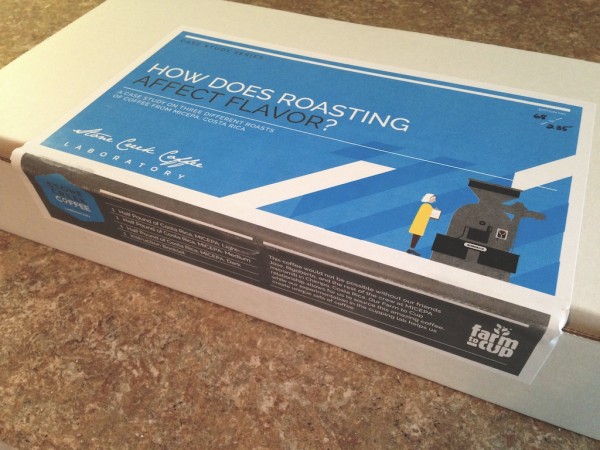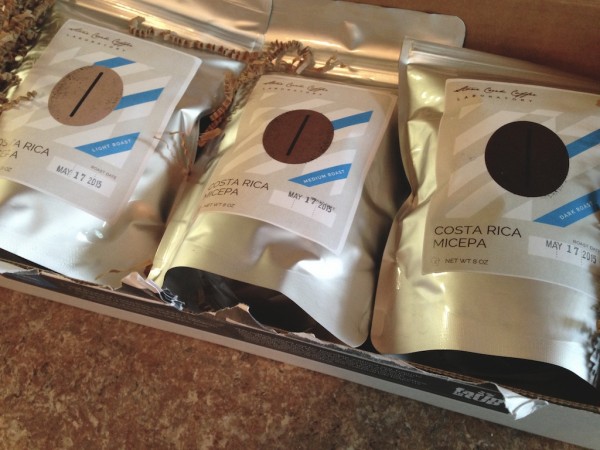It never ceases to amaze me the number of people I encounter who drink coffee on a daily basis, sometimes lots and lots of coffee, and yet have almost no understanding of the concept of a coffee’s roast and its impact on flavor.
What amazes me more is how this has been allowed to continue.
Fact is, the impact of roast on the final product is not something humans learn instinctively. It is one of those things in coffee that must be discussed before it can be fully experienced. If we borrow from Bloom’s Taxonomy of cognition, the entry level is knowledge, followed by the increasingly more complex levels of comprehension, application, and analysis. All four of these levels can easily be reached in a three-minute conversation and coffee demonstration with someone brand new to roast concepts. Ideally, minds are blown, and the consumer’s appreciation of coffee is forever changed as she or he heads on a lifelong journey of hardcore coffee analysis, Bloom’s most advanced cognitive stage.
Perhaps getting to that conversation is the problem.
Milwaukee’s Stone Creek Coffee Roasters is currently shipping that conversation to customers, in the form of a “case study” composed of a single-origin coffee with three different roasts. Granted, the case study is foremost a retail product — including three half-pound bags of coffee and an informational pamphlet in a tightly packaged box — but it’s also an interesting way to engage in a conversation related to coffee experimentation that many roasters may wrongfully assume is common knowledge.
The subject matter is even less sophisticated than Stone Creek’s previous case study on processing methods and their effects on flavor. For the roasting box set — titled “How Does Roasting Affect Flavor? — the Stone Creek team used coffee from the MICEPA Cooperative in Southern Costa Rica. This allows that coffee company to tell a single coffee’s story, too. In this case, the cooperative represents a network of about a dozen smallholders, with a central operation overseen by Rigoberto Araya Blanco and José Ureña Ulloa. The cooperative is relatively new to specialty coffee, but that has been changing through the involvement of importer Francisco Mena of Exclusive Coffees.
See how much we’re learning?
Online, Stone Creek goes into more detail on the cooperative, its history and its recent improvements and developments in processing, as well as taking the opportunity to promote its own investments into MICEPA coffee.
From there, case study itself relays roasting basics.
The graphics-heavy informational guide includes basics on the stages of green coffee as it transforms in the roasting process through yellow/light browning, first crack (the Maillard Reaction gets its own little sidebar with a phonetic spelling, for example), the development stage, the end-of-roast stage and the dark roast stage. It even includes a basic graph that helps explain what is a roast profile and how it develops over the course of, in this case, 10 minutes. Finally, there is a diagram of a production roaster, with all its major components explained.
Armed with such knowledge, the consumer can presumably arrive at a more immersive coffee tasting experience on her or his own, perhaps tasting the three roasts side-by-side, with full appreciation of the source of the coffee and some of the hands it has touched.
Only the most curmudgeonly of coffee pros would not think this is all pretty fun.
Nick Brown
Nick Brown is the editor of Daily Coffee News by Roast Magazine.
Comment
5 Comments
Comments are closed.








Useless, uninformative article thats only function is to sell a product.
I’m not so sure I agree.
Half the time the industry keeps berating customers with the drumbeat of “Educate the consumer”. Sometimes you just want to enjoy your coffee instead of feeling like there’s an army of industry professionals who feel its their mission to treat you like you have a learning disability that must be cured.
As a Barista in a well-known speciality coffee shop. I understand that it’s important to not make your customers feel stupid.
The information is readily available and any of us working will happily explain anything in as much detail as wanted. If you just want a coffee I’ll make you one – a damn good one too. Coffee is our passion so obviously we love to share that, but passion can quickly become invasive if pushed too hard.
There’s absolutely no obligation to know everything about what you eat/drink/consume.
Being a ‘home roaster’ I have a little different experience on this subject, as once folks know that I do roast coffee 90% of the time they want to know more about it.
You can take the same coffee as Stone Creek has done and I can almost guarantee one of the Roast profiles just won’t taste good, the other will be ok, and the third will be excellent – I’m surprised most Pro Roasters don’t or won’t explain this to their Baristas/Employees. I understand why a Barista without Roasting knowledge would be completely unaware of this concept – that being all coffee isn’t made to be roasted at different profiles and actually taste good.
What would be more informative would be to educate the Public on ‘tasting’, and what different flavors are….although all tongue’s are not created equal.
ignotum per ignotius